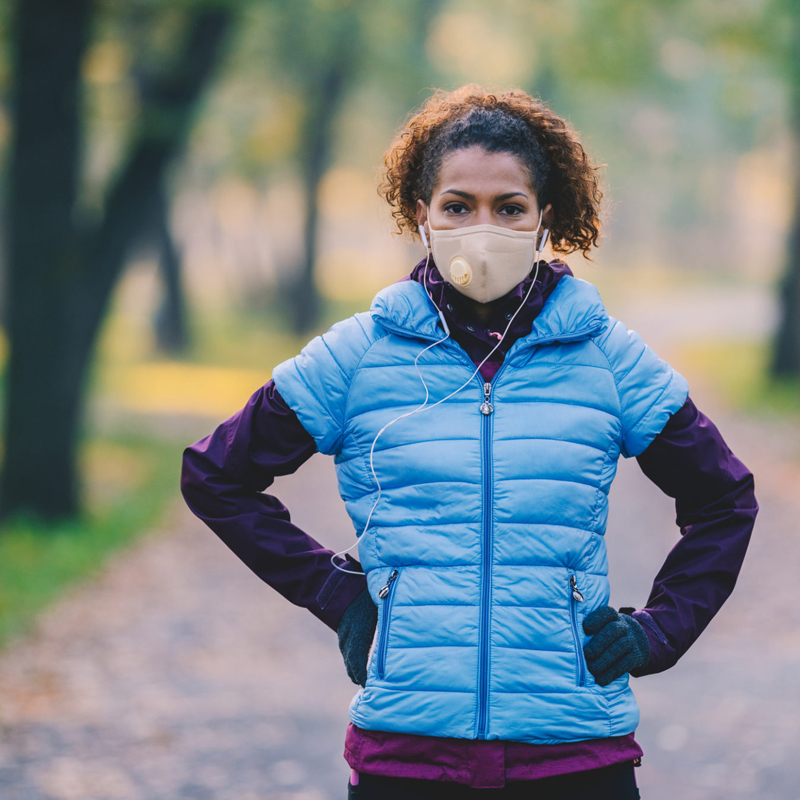How to Ease Back Into a Workout Post-COVID

July 27, 2021
Here are some tips for how you can ease back into exercising after a year in quarantine.
Exercise is essential for our overall physical and mental well-being. If more than a year at home threw you off your exercise routine, you might be ready to get active again. If the idea of starting up again is intimidating, here are a few tips to help you ease back into working out.
Find a Place Where You’re Comfortable
Find a gym that feels safe and comfortable. If you are not fully vaccinated—or if you are fully vaccinated but still want to take extra precautions—wear your mask, continue to social distance and sanitize any surface you touch. If you are still wary of going back to the gym, find workouts online that you can do from the comfort of your home. And if home workouts aren’t your thing, try working out in your yard or at a public park.
Start Slow
Don’t feel pressured to exercise at the same level and intensity that you did pre-COVID. If it’s been a while since you last worked out, take it easy and start off slow. Gradually increase the weights that you use or number of reps for each workout. After a few weeks of consistency, you’ll see improvement in your endurance and stamina.
Listen to Your Body
Don’t push yourself past your limit and don’t ignore when your body is telling you it needs rest. If you become breathless or your body is aching, take a break. Make sure you are stretching, too, before and after workouts.
Track Your Progress
Use your cell phone, smartwatch or fitness tracking ring to track your steps, heart rate and distance. Being able to see a visual of your gradual progress can keep you motivated.
Be Realistic
Be realistic with the fitness goals that you set for yourself. Setting your expectations too high can lead to frustration if you are unable to meet them. Be sure you are considering that your body needs time to adjust to being active again.
Ease Back in if Recovering From COVID-19
Returning to exercise after recovering from COVID-19 can be an especially slow process. It’s important to watch for symptoms such as chest pain or heart palpitations, and stop immediately if you experience these. You likely will need to gradually get back into exercise and build up intensity over time. If you are experiencing long-term symptoms of COVID-19, our COVID Recovery Center can help: HMHforU.org/COVIDRecovery.
Next Steps & Resources:
- If you are experiencing long-term symptoms of COVID-19, our COVID Recovery Center can help
The material provided through HealthU is intended to be used as general information only and should not replace the advice of your physician. Always consult your physician for individual care.
Find a doctor near me
How to Work Out Comfortably with a Mask

Work out comfortably while wearing a mask. Learn expert tips from Palisades and Southern Ocean Medical Center doctors for safe, effective exercise.
Recovered from COVID-19? Why You Still Need a Vaccine

Dr. Thomas Bader has answered common questions about the COVID-19 vaccine that you may have if you’ve already experienced the illness
Find a doctor near me

7 Ways to Strengthen Your Spine
Strengthen your spine with 7 expert tips. Learn how to improve posture, exercise safely, and maintain a healthy weight for better back health. Ocean Medical Center offers guidance.

How Losing Weight Can Add Years to Your Life
Bariatric surgery not only helps with weight -loss—it also can increase your life expectancy.

How You Can Eat Carbs and Still Lose Weight
Eat carbs & still lose weight? Dr. Varghese shares expert tips for healthy eating. Learn how to make better food choices and improve your health. Call 800-822-8905.

How to Check Your Heart Rate
Learn how to check your heart rate. Dr. Batsides offers guidance on understanding your pulse, improving your health, and scheduling an appointment. Call 800-822-8905.
